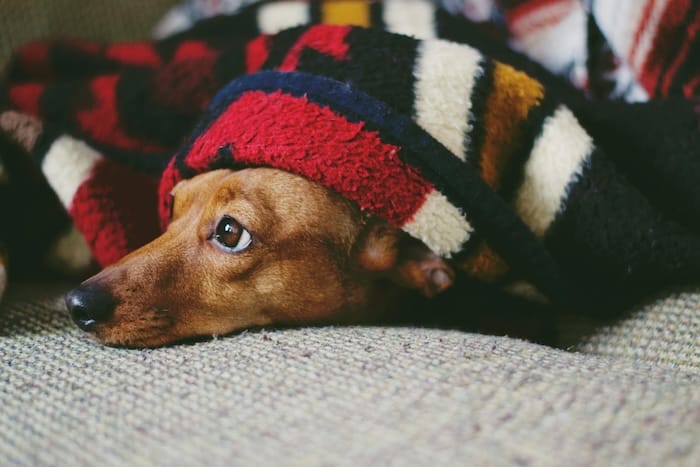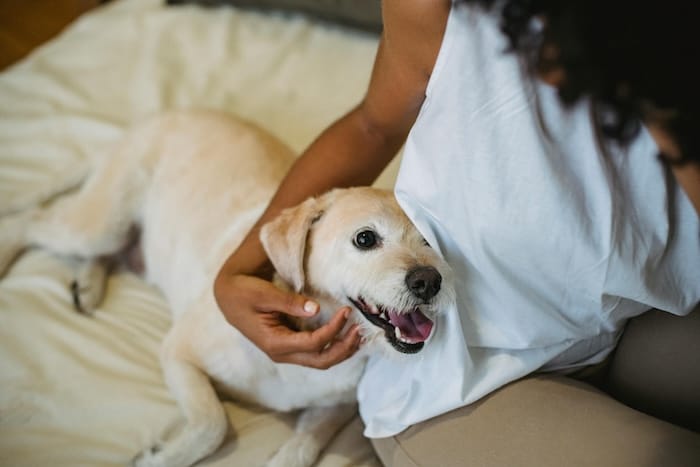One of the reasons so many of us love dogs is that they can embody so many human-like emotions. Unfortunately, that isn’t restricted to the positive, uplifting ones. Just like humans, dogs can experience negative emotions, and that includes feelings of anxiety. Also, just like humans, it can have several causes, from loud noises in their surroundings to being separated from their owner and family to lacking enrichment in their environment.
As dog lovers and dog owners, we naturally want to reduce and, hopefully, eliminate this anxiety to make life for both dog and owner happier and free of stress. So, in this blog, we’ll help you understand how to spot anxiety in dogs and the ways to combat it.

The Signs of Anxiety
Just as anxiety in dogs can have a range of causes, anxious dogs display a variety of responses. Pacing and being unable to settle are common, as is trembling and either hiding or seeking contact and company. Particularly anxious dogs might also bark excessively, damage or destroy things, or even become aggressive to others. But hopefully, you’ll be able to identify earlier and lesser signs and make changes to prevent the problem from getting to that stage.
Make a Safe Space
Most dogs will seek comfort and security when they’re anxious or distressed. If you have a dog that is prone to anxiety, then create a safe space in your home for them to go to when they want. Make sure it is quiet and furnish it with familiar items – their bed, toys, a well-used blanket, and so on. You may have to direct or guide your anxious dog to this area when they’re distressed at first, but they’ll soon start to understand that they feel safe there and go there on their own if they feel the need.
Use Calming Products
There is a wide range of products on the market to help reduce anxiety in dogs, working in different ways. You can get wraps that fit around the dog’s body or the head/neck and provide a reassuring feeling of protection and closeness. You can get diffusers that release soothing pheromones into a room and collars that work similarly but are effective wherever your dog goes. Products like a Lickimat provide enrichment by providing a more gradual and challenging feeding time, as well as encouraging them to lick, which is a naturally enjoyable and calming activity for dogs.
Maintain a Routine
Even the most free-spirited dog is most comfortable with a familiar and consistent routine, with regular and predictable events and comings and goings. Even the most chilled-out dogs can become anxious if their routine changes – at least until they adapt. Some pets may only need some of the techniques in this blog temporarily to help them adjust to a new routine. Always try to maintain a regular daily schedule for feeding, walking, play, and quiet times. If possible, make changes to your dog’s routine and situation gradually.

Introduce Desensitization
If your dog has particular things that cause them anxiety, you can try gradually exposing them to those things in a safe and controlled environment. For instance, if your dog is scared of thunderstorms or loud traffic noise, you can play recordings of these sounds at a low volume and then gradually increase the volume in each session. Always make sure that you provide a calm and reassuring influence so your dog learns to associate the sound with safety and normality.
Hopefully, one or some of the methods above will help calm your anxious dog. The most important thing is that you are there to help, calm and reassure them. Always be prepared to seek help from a vet or animal behavior expert.
